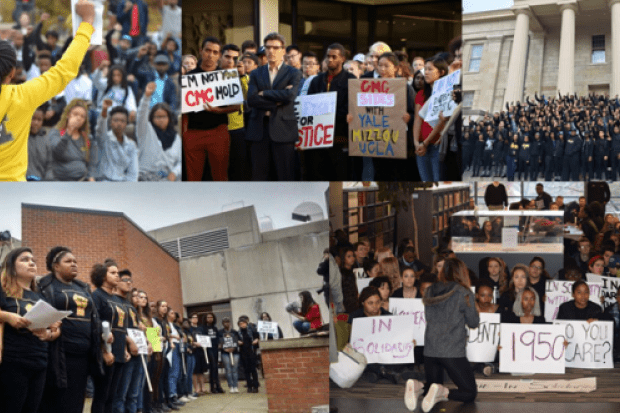Increasing faculty diversity has long been a priority on college campuses, but the recent, widespread student protests over race relations have made the issue all the more urgent. And while a number of institutions have already pledged additional resources to increasing faculty diversity, questions remain about how realistic some of these goals are – at least in the near term.
That’s because black students remain under-represented in a variety of PhD programmes. Even trickier, experts agree, is getting more black students to stay in academe after they earn their PhDs, given climate concerns and the fact that they are also in demand elsewhere, including the much better paying corporate world. So any successful diversity plan, those experts say, will involve not only bringing more black faculty members to campus, but also addressing the climate issues that will influence whether they stay there.
“Getting to a certain percentage of black faculty by a certain time is a tough road,” said Kimberly Griffin, an associate professor of higher education at the University of Maryland at College Park. “Especially when we’re talking about doubling or tripling a population. Increases that significant often require more faculty lines either through retirements and other departures or the creation of new lines, which requires funding” that institutions may not have.
Students at the University of Missouri at Columbia have called on administrators to increase the share of black faculty members to 10 per cent by 2017-18, roughly mirroring the share of black undergraduates (8 per cent). Campus activists and others outside Mizzou, as the institution is known, say that students need more professors who reflect an increasingly diverse student body, and that the academy itself benefits from a greater range of perspectives.
Mizzou hasn’t yet formally responded to that demand, Inside Higher Ed reported, although a university spokesperson said that it was under discussion. Data suggest it would be difficult. Mizzou’s faculty is currently 3 per cent black, according to 2013 data from the National Center for Education Statistics’ Integrated Postsecondary Education Data System, meaning that it would have to more than triple its share of black professors within about two years.
If Mizzou somehow did meet that goal, it would be way ahead of most of its peers, since just 6 per cent of faculty members nationwide are black. Averages are even lower in Mizzou’s immediate peer group, the Southeastern Conference: of 14 universities, just two – the University of Alabama and the University of Mississippi – meet the national average of 6 per cent black faculty. Mizzou fares worst, but the group average is just 4 per cent.
Part of the problem is that black students are under-represented in a majority of PhD programmes and among PhD holders nationwide.
While black people make up 14 per cent of the US population, they’ve earned roughly 6 per cent of the research doctorates awarded to US citizens and permanent residents each year since 2003, according to the National Science Foundation and other federal agencies’ Survey of Earned Doctorates. While blacks hold a relatively high proportion of education doctorates, earning about 13 per cent of such degrees awarded in 2013, they’re under-represented in other fields.
According to 2013 data, the most recent available, they earned 6 per cent of life sciences doctorates, 3 per cent of physical sciences doctorates and 5 per cent of engineering doctorates. In the social sciences, blacks earned 7 per cent of doctorates. It was 5 per cent in history and about 4 per cent in the humanities. In business, it was 9 per cent.
Beyond supply, there are concerns about retention among minority faculty members in higher education. Griffin’s own research suggests that female and minority PhDs in biomedical fields are more likely than others to lose interest in faculty careers while earning their doctorates.
A missing piece of the puzzle is “whether the black graduates of doctoral programmes actually want to stay in academia, despite their abilities and commitment to their communities”, Griffin said, noting that interest in academic careers among under-represented minority women in particular still wanes in relation to their peers even when controlling for scholarly productivity, prestige of programme and quality of advisors. “Something is happening to career interests in graduate school that we must address to see change.”
Shaun Harper, a professor in the Graduate School of Education and executive director of the Center for the Study of Race and Equity in Education at the University of Pennsylvania, said that he was less interested in specific faculty diversity targets than broader questions about how to eliminate bias in hiring decisions and fixing climate concerns.
“Conversations concerning faculty diversity are terribly lopsided,” he said via email. “Emphasis is often placed on hiring more faculty of colour, which is incontestably necessary. But not enough attention is paid to raising the consciousness of white faculty members about how their implicit biases shape their interactions with students and colleagues of colour.”
Targets aside, accountability for diversity initiatives is also necessary, since “investing financial resources into recruiting more faculty of colour is only a small part of the solution”, Harper said. “It is entirely possible that only a tiny fraction of funds committed will be spent, especially if deans and department chairs are not held accountable for taking advantage of faculty recruitment and retention resources that have been made available.”
